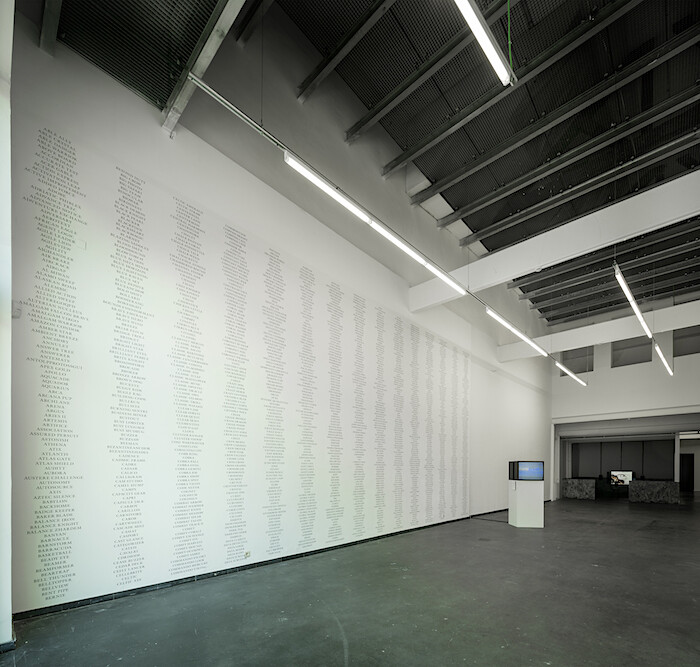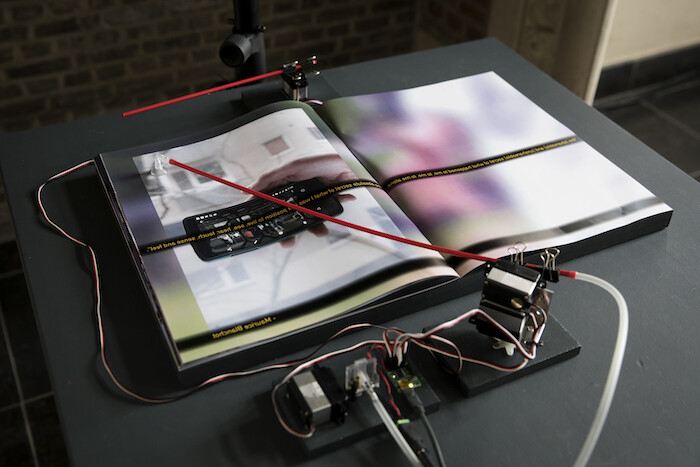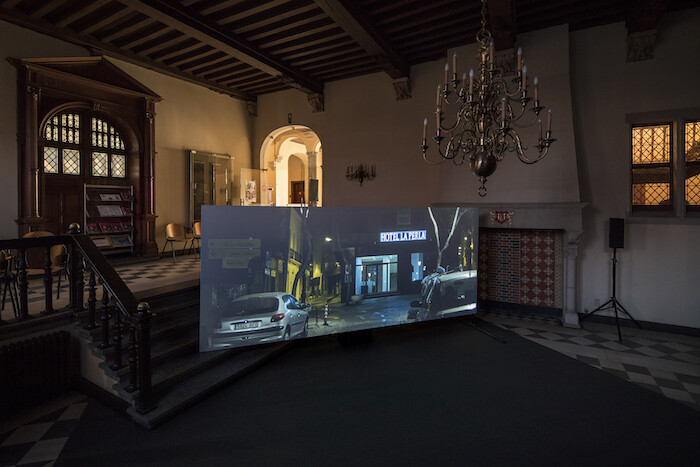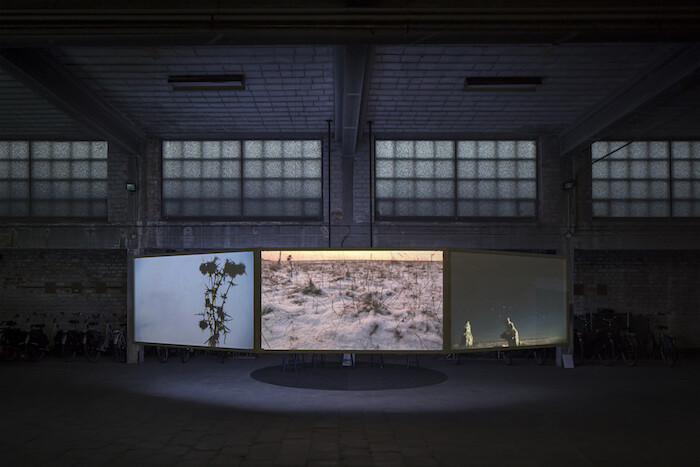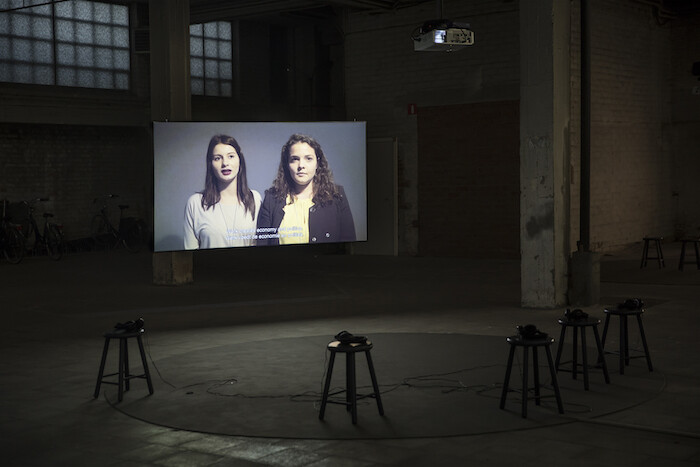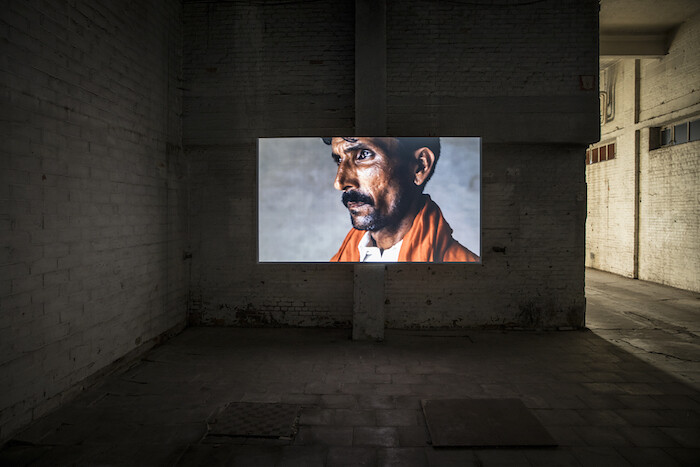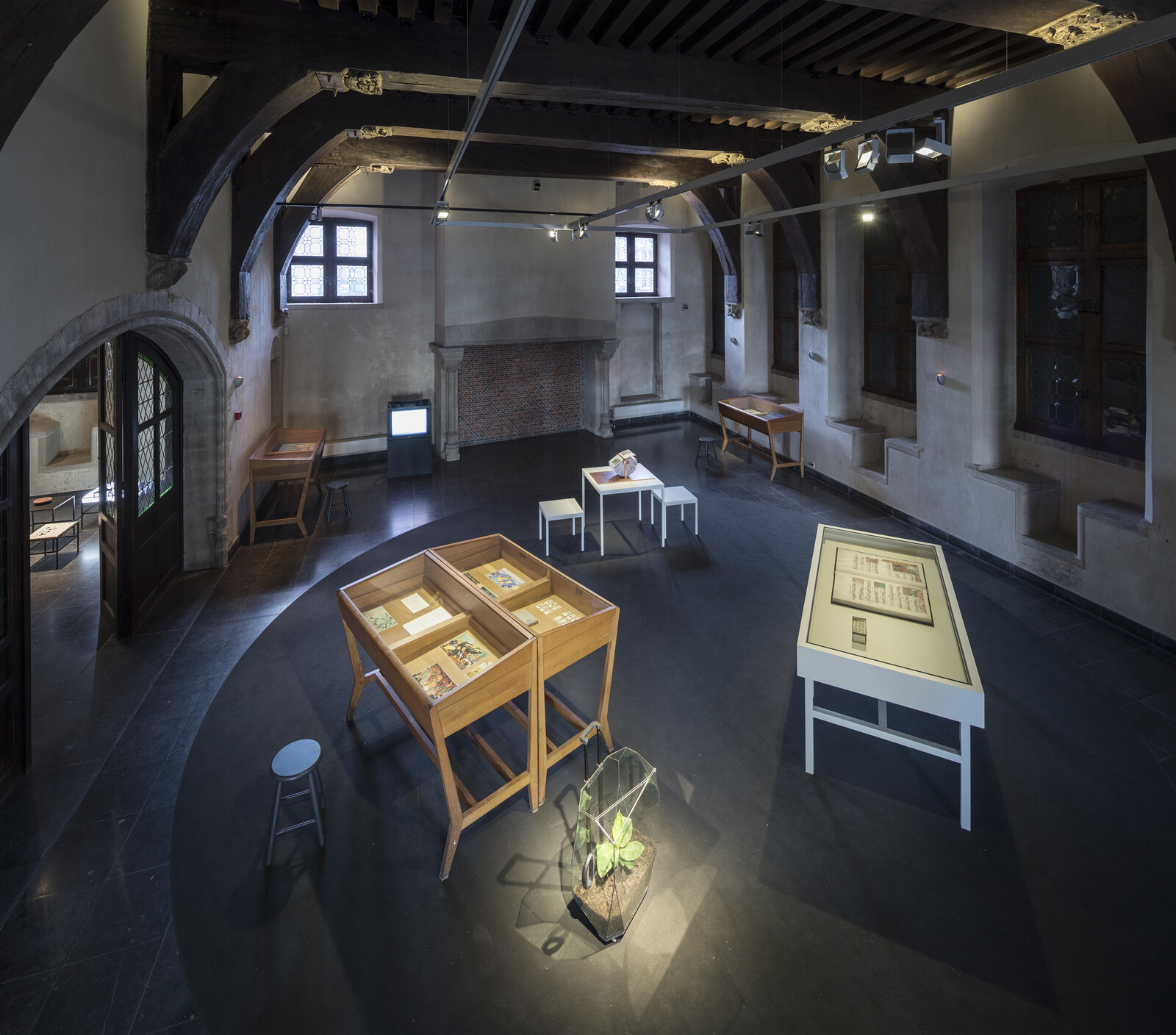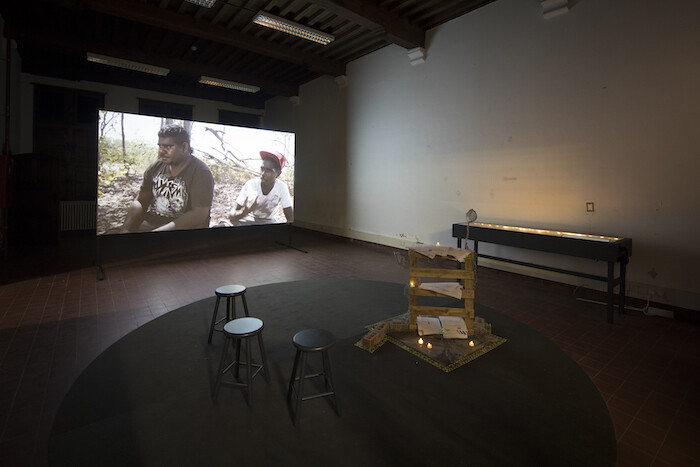What could be more pertinent to today’s helter-skelter mudslide into the political abyss than a reflection on the idea of justice? The eighth edition of the Contour Biennial is dedicated to this most noble of themes. Both thrilling and frustrating, the biennial offers vertiginous perspectives by artists and theorists, as well as the inevitable art-world speculation and textual flak. Hosted in the small, historic town of Mechelen, just outside Brussels, the biennial is installed in numerous venues ranging from a thirteenth-century courthouse to a post-industrial warehouse. Contour 8’s awkward subtitle, “Polyphonic Worlds: Justice as Medium,” alludes to Mechelen’s historic role as a seat of juridical power in the region, as well as to the city’s importance in the development of Renaissance polyphonic music. The biennial entwines the themes, with polyphonic music acting as a metaphor for the multiple voices of pluralistic societies, which in turn becomes the grounds for renewed thinking about the stakes of justice in a globalized world.
Curated by Natasha Ginwala, who is also a curatorial advisor on this year’s documenta 14, Contour includes works from diverse geographies, from Northern Europe to the Australian Northern Territories. At the biennial’s main site, The Garage, a number of works document social, political, and ecological injustices. Ana Torfs’s Anatomy (2006) uses 35mm slides, a soundtrack of witness testimonies relating to the murder of Karl Liebknecht and Rosa Luxemburg in Berlin in 1919, and re-enacted scenes to produce a sepulchral installation whose mood is somewhere between elegy and intellectual aide-memoire. Ritu Sarin and Tenzing Sonam present Burning Against the Dying of the Light (2015–17), a series of videos, objects, and documents related to Tibetan Buddhist monks who have self-immolated in protest against Chinese rule. Paris-based Council (Grégory Castéra and Sandra Terdjman) exhibit drawings for their as-yet-unrealized publication The Against Nature Journal, whose aim is to challenge legislation that prohibits supposedly “unnatural” sexual orientations (for example, these laws apply in Lebanon and Kenya).
The curatorial arrangement at The Garage seems uncomfortable—the result, perhaps, of Ginwala’s thematic exploration of polyphony, where artists’ voices remain distinct and even clashing. Exhibited next to Sarin and Sonam’s stark documentation is Beatriz Santiago Muñoz’s Black Beach/Horse/Camp/The Dead/Forces (2016), an elegiac 16mm film shot in Vieques, Puerto Rico, which was used by the US Navy as a bombing site for 60 years. Queensland-based painter Madonna Staunton’s striking, roughly figurative paintings are shown adjacent to Ho Tzu Nyen’s, NO MAN II (2017), a sleek but nightmarish CGI video of avatar-like figures performing a dissonant choral piece. Trevor Paglan’s Code Names (2001-ongoing), a list of names of classified military programs worked through issues of hidden and covert evidence, is situated near Arvo Leo’s Accidental Ant Hill Sculpture (2017), a laconic video essay musing on the idea of sculpture in a post-human era. Nearby is Rossella Biscotti’s “Other” series (2014), a suite of woven rugs whose pixel-like patterns derive from census reports on Brussels, exploring issues of population management and data visualization.
The most demanding exhibition venue is Mechelen’s thirteenth-century Aldermen’s House, the original seat of the Great Council of the Netherlands in the fifteenth century. Works here develop the idea of justice in the realm of colonial and postcolonial exploitation; but not all are entirely convincing. In Otobong Nkanga’s Reflections of a Raw Green Crown (2015), the artist stands outside churches in Berlin wearing a sculptural hat resembling the copper minerals mined in Namibia and used in European bell-towers—a pointed, but illustrative, gesture. Trinh Thi Nguyen’s Vietnam the Movie (2014–17), a video compilation of movies about Vietnam, which range from Hollywood blockbusters to low-budget television, demonstrates that media images of the country often reduce it to stereotypes of war. While not incorrect, the critique seems vague, lacking nuanced reflections on the types of media involved, or how and why these narratives have emerged. Other works more successfully question issues of global justice in the context of Northern Europe. Judy Radul’s video installation The Book of Glass features CCTV cameras that scan the street outside to evoke a sense of surveillance and monitoring. Rana Hamadeh’s work-in-progress for her opera The Ten Murders of Josephine (2017-ongoing) is powerful, with two performers reading texts related to the European slave trade. The Brussels-based initiative Agency presents a series of items from its research archive, including my favorite—a book on monkey “self-portraits” by photographer David Slater.
While numerous works are elements of ongoing projects (Council, Agency, Hamadeh), those that stand out to me are complete, finished works. Eric Baudelaire’s superbly confident documentary video Also Known as Jihadi (2017) uses courtroom evidence as a scripting device to recount the life of French jihadi fighter Abdel Aziz Mekki, who is currently incarcerated in a French prison. The work consists of excerpts of courtroom documents and intercepted calls and text messages, as well as lengthy sequences of observational footage shot by Baudelaire retracing Mekki’s journey from France to Syria. Baudelaire’s video also continues his exploration of a theory developed by Japanese militant documentary maker Masao Adachi, which argues that the landscape itself is an expression of dominant ideologies. Here, Baudelaire connects ideas of evidentiary proof in law with the very stakes of documentary: the telling of truth through visual or oral corroboration.
A number of significant moving image works include Pallavi Paul’s strange and fantastical video The Dreams of Cynthia (2017), delving into performative identity and sexuality; Adelita Husni-Bey’s Agency – Giochi di Potere (2014), a video of Italian high school students role-playing as politicians, journalists, bankers, activists, and workers; and Basir Mahmood’s Monuments of Arrival and Return (2016), elegantly shot video portraits of railway porters in India. Other works might be described in terms of paracinema (cinema without projectors, films, or screens). Pedro Gómez-Egaña’s The Moon Will Teach You (2017) is an installation that transforms the attic of a Renaissance townhouse into a music-and-light instrument, replete with an automated window shutter that intermittently seals off the room’s single light source. Lawrence Abu Hamdan’s The recovered manifesto of Wissan [inaudible] (2017), an outdoor installation of analogue audiotapes draped in loops over neatly clipped bushes, references the Islamic juridical concept of Taqiyya, or the right to lie in the face of persecution. It’s a work that might be thought of as paradocumentary—extending the ideas of evidence in documentary film beyond the medium.
A major sub-theme at Contour is the idea of shorelines and underwater life as the limits of the legislative imagination. Susanne M. Winterling’s Glistening Troubles (2017), an installation of CGI videos of bioluminescent algae, touches on notions of ecological justice and radical feminism. Filipa César and Louis Henderson’s mesmeric essay video Sunstone (2017) explores tropes of satellite surveillance and the history of lighthouses off the coast of Western Europe. For me, the most urgent and rewarding engagement with ideas of littoral space is Karrabing Film Collective’s video and multimedia installation The Stealing C*nt$ (2017). Somewhat like Jean Rouch’s ethnofictions, the Collective deploys stories to tell truths about neo-colonialism; here, the focus is on the tribulations of legislation, indigenous policy, and policing in the Northern Territories. Strikingly intelligent but never burdened by overt displays of theory (it’s funny, mocking, ironic), the Collective’s work is hugely refreshing. Along with other works in the biennial, it reveals the necessity of visual evidence, testimony, and performance to articulate troublesome truths against the vortex of dissimulation and lies in today’s reckless political climate.


